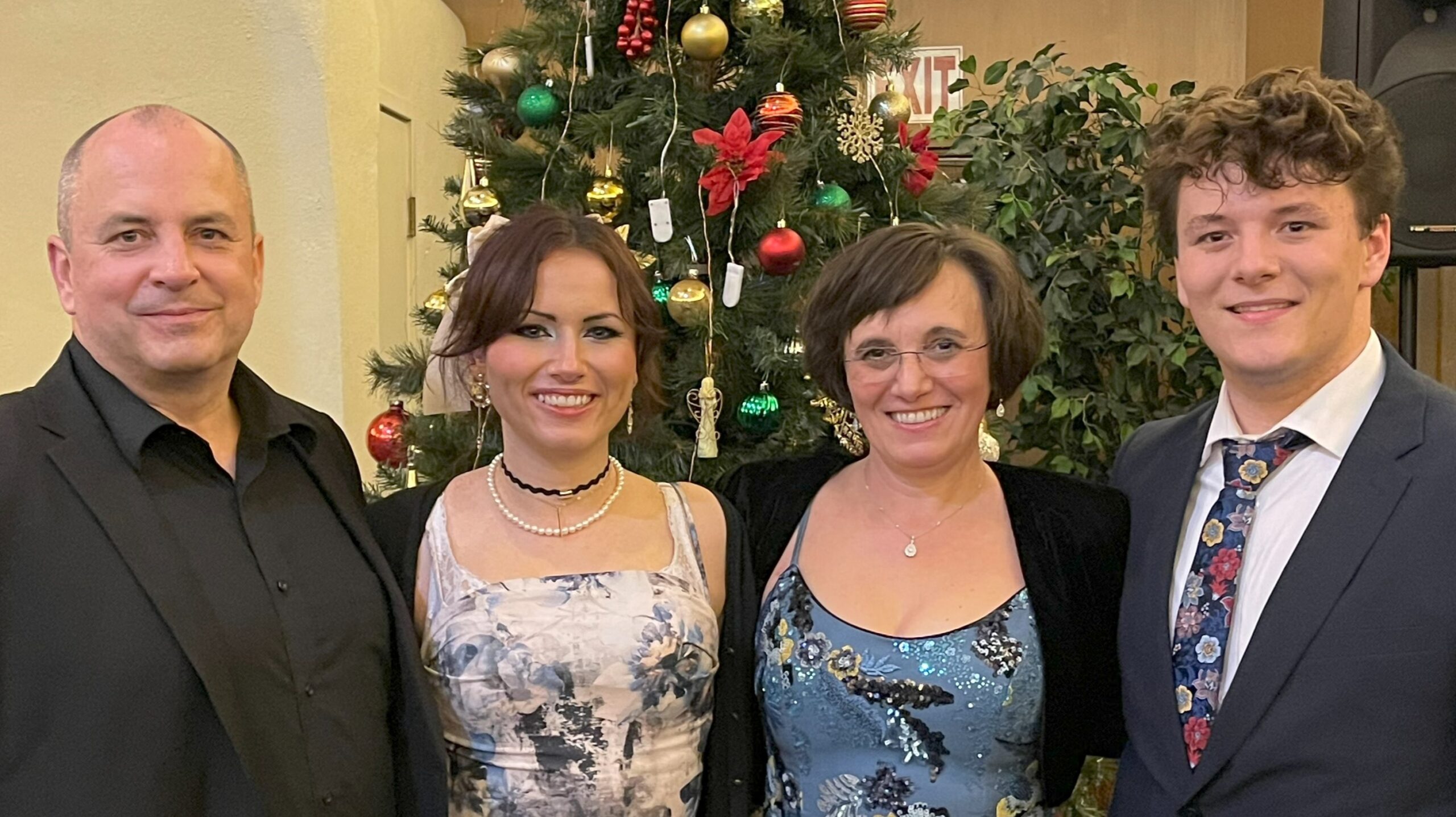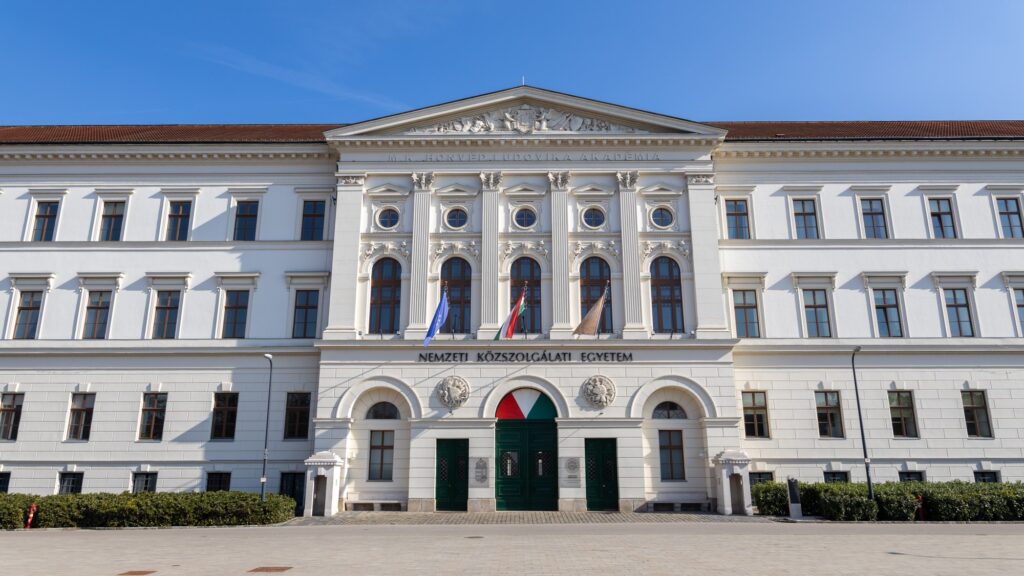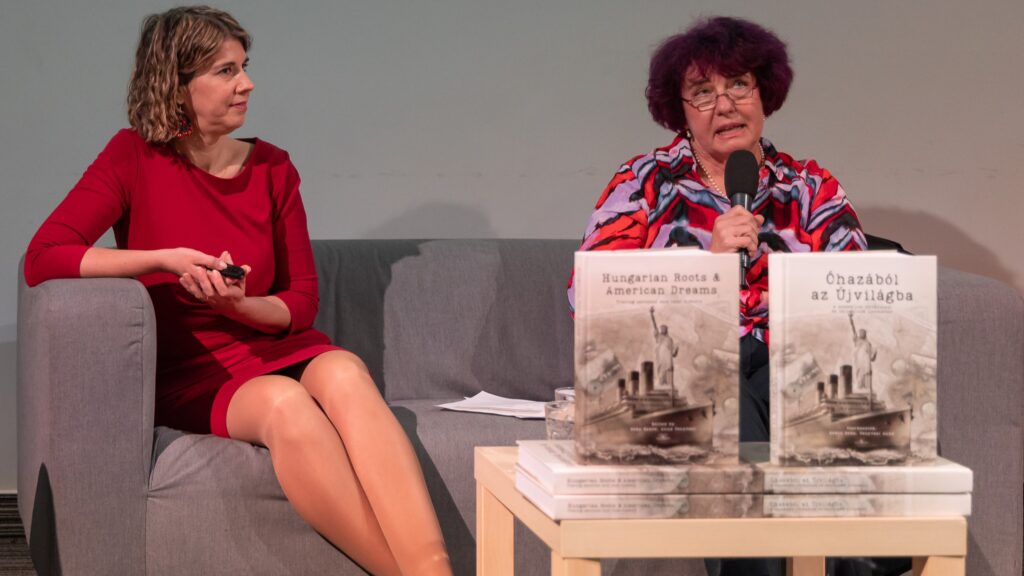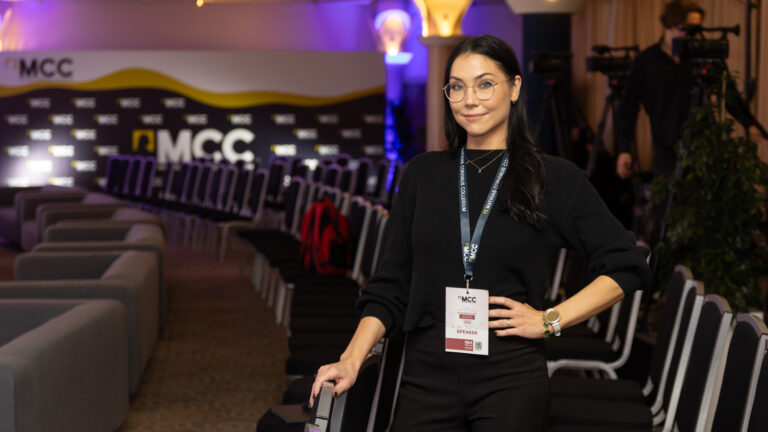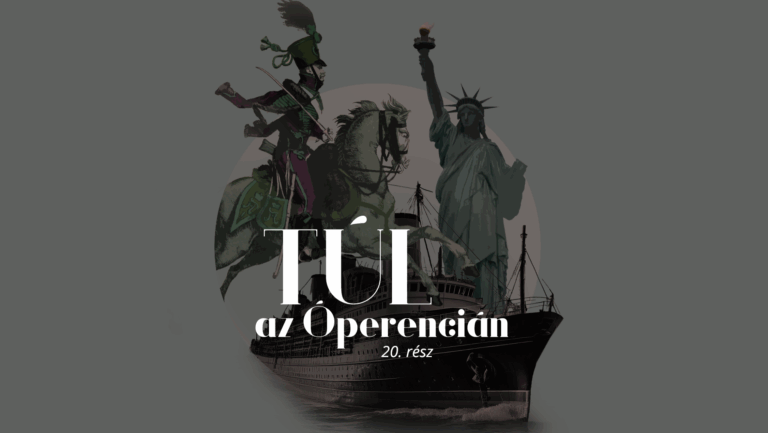This is the translation of the original interview, published in Reformátusok Lapja on 29 June 2025.
Gábor Magyari-Köpe left behind a promising pastoral career in Transylvania to follow his wife to Sweden, where he served for five years. For over two decades, he has been the pastor of the Hungarian Reformed Church of San Francisco and Vicinity. During his tenure, he not only revitalized the congregation but also led the successful purchase of a new church building through a communal effort and re-established the Hungarian Cultural Center, which had been closed for 40 years.
***
How did you become a pastor?
Although my mother’s family had many pastors, my childhood dream was to become a veterinarian or a forestry engineer. However, theology ultimately became my calling. I graduated from high school in 1992 and enrolled at the Protestant Theological Institute of Cluj. While studying in Kolozsvár (Cluj-Napoca, Transylvania, Romania), I met my future wife, Blanka. She graduated as a physicist-engineer in 1997 and received a nine-month scholarship to study in Sweden. We made a pact: by the time her scholarship ended, I would complete my studies, she would return home, and we would get married.
During my theological studies, Ferenc Antal, a former dean and auxiliary bishop from Brassó (Brașov, Romania), often sent me to substitute for pastors in nearby villages. These experiences were invaluable, and he recognized my potential. It seemed certain that after graduation, I would be assigned as a pastor in Zernyest (Zărnești), while also serving as an assistant pastor at the House of Hope congregation in Brassó—a promising start, compared to most newly ordained pastors, who typically began in small rural parishes. However, when Blanka’s scholarship ended, she was offered a PhD position in Sweden. By then, we were already engaged. She convinced the leadership of the Hungarian Protestant Church Community in Sweden to invite me as a Christmas preacher in 1997.
How did a temporary assignment turn into five years of service?
At the time, the Hungarian Protestant Church Community in Sweden consisted of 18 congregations: 14 in Sweden, two in Estonia, and two in Finland. These congregations were served by a single pastor, Rev. Pál Molnár-Veress, who was overburdened and in dire need of assistance. I petitioned Bishop Kálmán Csiha for permission to return to Sweden as an assistant pastor after completing my theological studies. From 1998 onward, I worked in this capacity for two years. In 2000, I passed my second ordination exam, officially became an ordained pastor, and returned to Sweden as the second pastor for the Hungarian congregations.
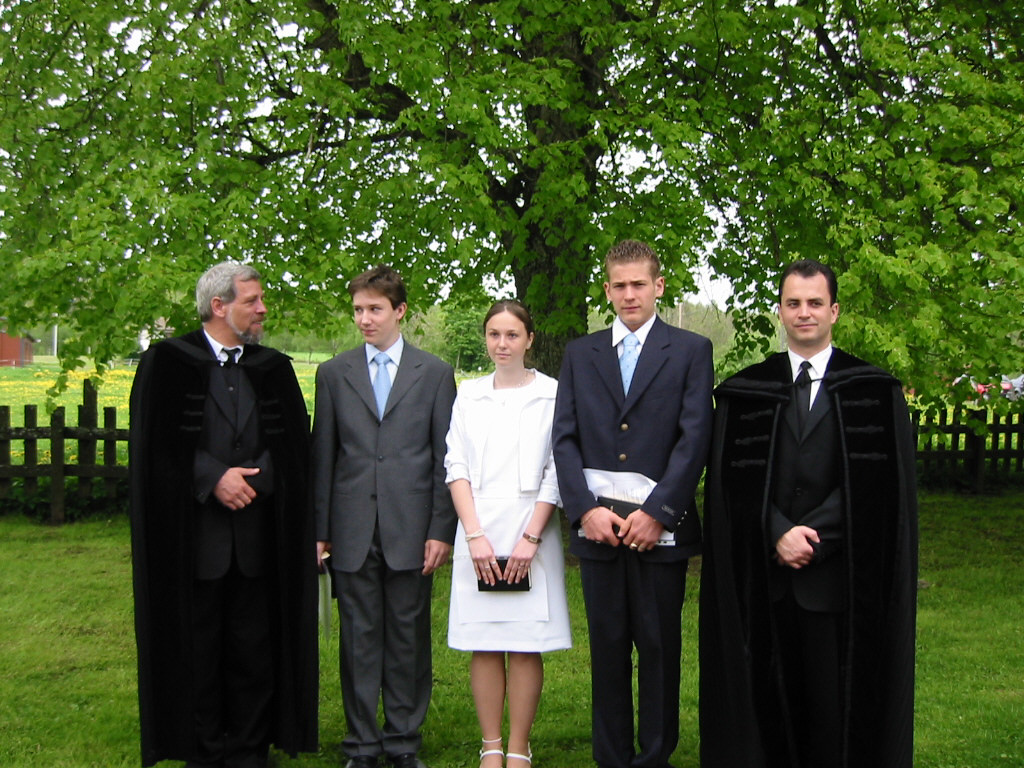
The work was intense: each congregation had just one service per month, which meant I conducted four or five services every weekend, driving 1,000–1,200 kilometers in the process. At that time, Sweden was home to approximately 30,000–35,000 Hungarians. The Hungarian communities maintained a strong connection to their heritage, and church services were one of the few opportunities for them to gather and preserve their faith and cultural identity. The largest congregations were in Gothenburg and Stockholm, where 30–40 people typically attended Sunday services, with over 100 gathering for major holidays.
Why did you leave Sweden for America?
After my wife earned her PhD, we began contemplating our future. My former position in Brassó had been filled. Hungary was an option, but Blanka preferred the U.S., where she had attended many scientific conferences. Before making a final decision, we planned a short trip to visit the U.S. A few days before departure, while browsing the internet, I stumbled upon a job posting: the Hungarian Reformed Church of San Francisco and Vicinity was searching for a new pastor. Their former pastor, Rev. Jenő Katona, had retired after 13 years. I quickly submitted my application and offered to visit in person.
What was your first impression of America and the church?
I fell in love with San Francisco. I arrived in early April, and the city was breathtaking: clear skies, warm sunshine, and not a trace of fog. I immediately sensed that I could build a future here. After preaching my introductory sermon, I had a formal interview with the church elders and returned to Sweden. On my 30th birthday, I received the official confirmation: they had chosen me. Meanwhile, my wife secured a position at Lawrence Livermore National Laboratory, near the city—everything seemed perfectly aligned. We arrived in San Francisco on 3 October 2003. However, shortly afterward, Blanka’s job offer was rescinded. She had to find a postdoctoral position at UCLA—400 miles away. Daily commuting wasn’t an option, so for two years, she worked in Los Angeles, while I served the congregation in the Bay Area. Eventually, she secured a position at Stanford University, where she worked for 15 years. With our careers stabilized, we started a family. Today, our son, Norbert, is a college student, and our daughter, Ingrid, will graduate from high school next year.
What was the congregation like in San Francisco?
The congregation was primarily composed of refugees from the 1956 Hungarian Revolution. At just 30 years old, I could have been their son, or even their grandson. The congregation had 40–50 members, but sadly, no young people. Most second-generation Hungarian Americans didn’t attend because they didn’t speak Hungarian fluently. Many 1956 refugees had believed they would never be able to return to Hungary, so they raised their children as fully American, without teaching them the language. By the time communism collapsed, their children were adults, fully integrated into American life. However, there were a few remarkable exceptions, such as Ilona and Elvira, sisters who founded the Örly Museum. They are third-generation Hungarian Americans, yet Ilona spoke Hungarian in a dialect preserved from over a century ago, learned from her grandmother.
What did the congregation expect from you?
They expected me to revitalize the community, attract young people, and grow the congregation to 200 members within six months. Of course, I’m exaggerating, but only slightly. Their expectations were incredibly high. However, the reality was far more complex. When I arrived, I found an aging but strong community—one that was physically and financially stable. Their children had grown up, giving them time to invest in church life, but there was no second generation to carry on their legacy. That said, Silicon Valley is a magnet for young professionals, and the Bay Area has a steady influx of Hungarian newcomers. Today, 85 per cent of our congregation consists of first-generation Hungarian immigrants. The 56er generation has nearly passed away, but a new community has taken root.
‘Ilona spoke Hungarian in a dialect preserved from over a century ago, learned from her grandmother’
How did you achieve this?
We identified a growing challenge: Hungarian scout groups in the Bay Area require children to speak Hungarian, but many kids—born into mixed marriages or raised in households where Hungarian wasn’t spoken enough—struggled with the language. This created a demand for a Hungarian children’s program for kids under five. That’s why we launched our Sunday School. Over time, more and more families joined the Children’s Corner. Initially, they only participated in that program, but as they experienced the congregation’s warmth and saw that, beyond religious life, there was a vibrant cultural community, they slowly began integrating into church life—even those who previously had little connection to faith.
Buying and selling a church building is a rare story in America these days…
The congregation, officially founded in 1951, purchased its first church building in San Francisco five years later. However, as the first wave of Hungarian immigrants began moving to the suburbs, discussions arose about whether the church should follow them. Eventually, the first church was sold, and in 1989, the congregation purchased a second church building in Redwood City—the place where I arrived in 2003.
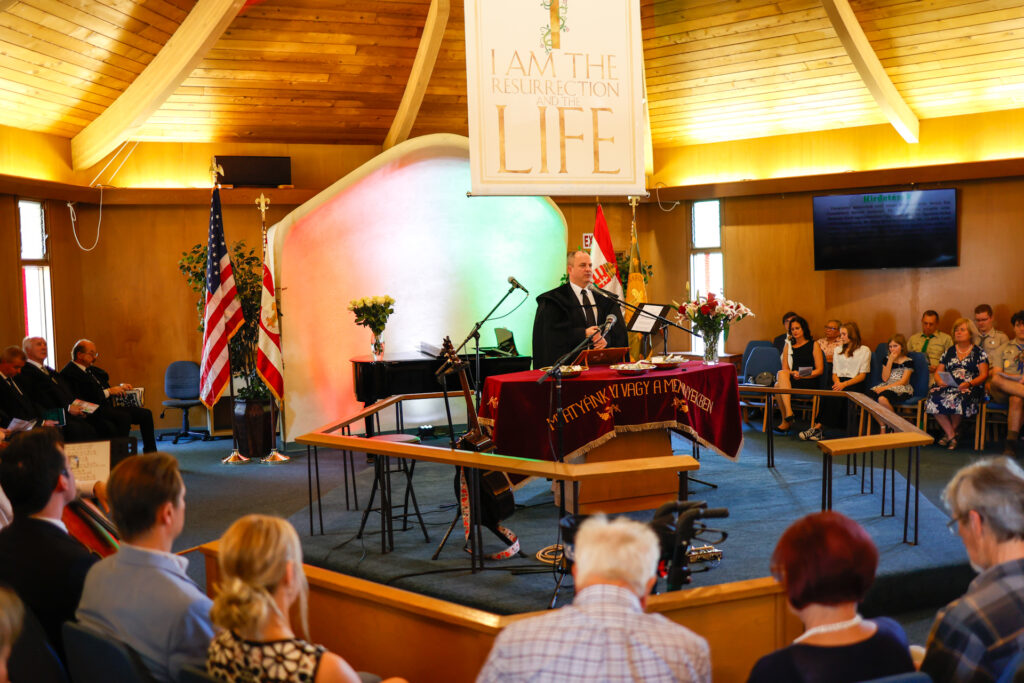
By 2016–2017, however, we had outgrown the Redwood City church. The location also presented multiple challenges: It was on the edge of a struggling Mexican neighborhood, limiting accessibility. The surrounding towns were prohibitively expensive, making it impossible for newly arrived Hungarian families to live nearby. The church itself had a beautiful interior, but severe practical limitations: a single community room, which doubled as a dining hall and a tiny parking lot, which made larger gatherings difficult. Younger members, in particular, began voicing a desire to relocate to a friendlier, greener area with more space to accommodate the growing community. We started searching for a new home and eventually found a church that, while not perfect, was significantly better. I was deeply invested in the idea of purchasing it, but when it came to a vote, the congregation decided against it. I took it hard. So hard, in fact, that I questioned whether I could continue…
Is that when you moved to Miami, Florida?
Yes. Once again, God intervened in an unexpected way: the Hungarian Reformed Church in Miami was looking for a pastor. Since my wife had a stable job and the children were in school, we agreed that they would stay behind while I went for a three-month trial period. Some had warned me that the Miami congregation was ‘difficult’, but I never found that to be the case. On the contrary, I built a strong connection with them and discovered a larger, more complex and diverse community where I truly felt I belonged. After what had felt like a failure in San Francisco, my time in Miami restored my self-esteem in many ways.
‘Some had warned me that the Miami congregation was “difficult”, but I never found that to be the case’
In mid-February 2020, the congregation officially elected me as their pastor. But just a few weeks later, the COVID-19 pandemic swept across the globe, shutting everything down. The challenges were overwhelming. At the time, my son was 15, and my daughter was 13. My wife was locked down at home with them on the other side of the country, while I was serving in Miami, thousands of miles away. Blanka had no job opportunities in Miami, as businesses were downsizing everywhere. My family struggled more and more with my absence. By the end of 2020, it became clear that this was not sustainable. I made the difficult decision to leave Miami and return to the Bay Area to be with my family.
How did the two congregations react?
The Miami congregation understood my decision. In fact, they even kept the position open for months, hoping I might return. When it became clear that I wouldn’t, they reached out to Rev. Lóránd Csiki-Mákszem, who has been serving there ever since. Meanwhile, in San Francisco, during my time in Miami, the church had invited a Hungarian pastor from Slovakia, but after just nine months, he chose to return home. Then, Rev. Viktor Tóth stepped in, but from the beginning, he made it clear that he was completing his PhD and would stay for only a year before returning to Los Angeles.
Once again, God worked in mysterious ways. Rev. Tóth’s one-year term ended, and I was back with my family, seeking a new position. The path back to the San Francisco congregation was remarkably clear. In September 2021, they rehired me. Looking back, I believe the break was beneficial for both me and the congregation. By then, even the older members had come to understand that we needed to move forward. Without embracing change, our church would have faced closure within a few years. Instead, we made a bold decision: we’d relocate from Redwood City to the east side of the Bay Area, where most of our young Hungarian families—our core community—lived.
That must have been a long process…Could you share more details with us?
Buying or selling a church building is never easy. The process required careful planning and patience. Initially, we continued holding services in our old church, but once a month, we began gathering on the east side of the Bay Area. Our new location in Newark had two large buildings (a church and a community hall), ample parking and a spacious green area. Eventually, the congregation decided to fully transition and put both the Redwood City church and the parsonage up for sale. Around the same time, Holy Redeemer Lutheran Church in Newark, the owner of our new location, decided to merge with a larger Lutheran church nearby.
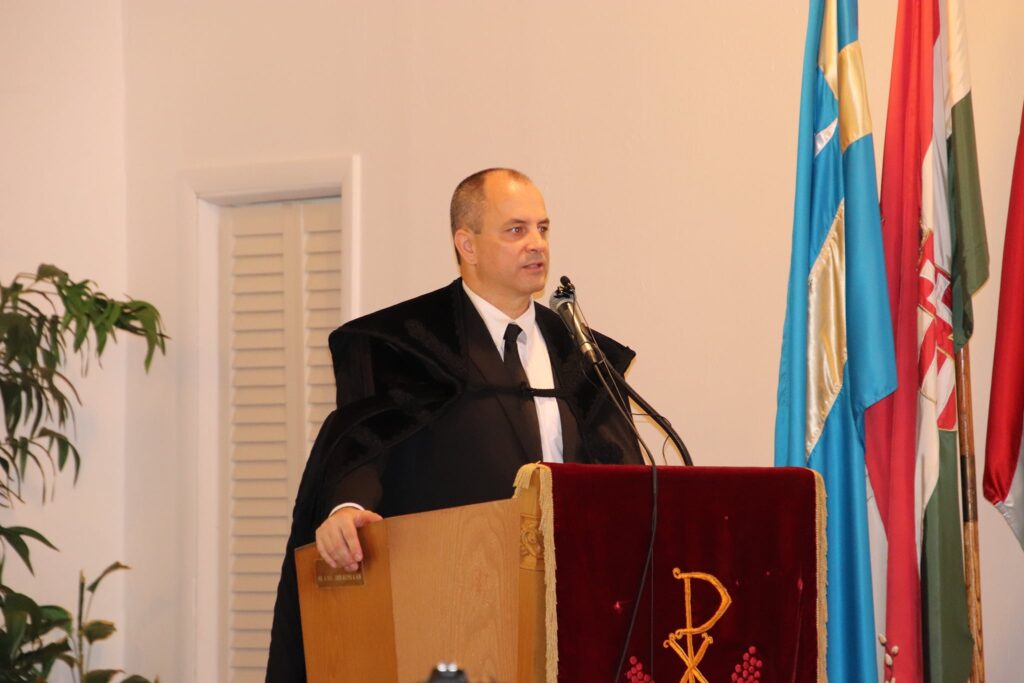
At the time, we didn’t know their long-term plans, but we could already tell that this location was perfect for us. It was more accessible, had plenty of space, and was ideal for hosting events. We successfully held a Father’s Day picnic, a traditional Hungarian sausage dinner and several other community celebrations. Then, we received surprising news: the Lutheran congregation was considering selling the property. We immediately expressed interest, but we weren’t the only ones. They received seven offers, including two from investment firms, each offering $7 million. We were far from being the highest bidder. At the January 2024 congregational meeting, I told our members: ‘I see a 1 per cent chance that we will be able to buy this church.’ I lacked faith, and the moment humbled me.
But then, something extraordinary happened. The Lutheran congregation was adamant; they didn’t want to sell to investors. They wanted the property to remain a place of worship, but they also needed a fair price, as they intended to donate the proceeds to charity. We had built a strong relationship with them, and ultimately, they came back with an offer: if we could increase our bid, we had a real chance. The amount they requested was significant, and we had to act quickly. What followed was nothing short of miraculous. We launched a massive fundraising campaign, and the unity of the Hungarian community in the Bay Area was incredible to witness. In addition to a few major donors, countless individuals made smaller contributions. Within just two months, we raised approximately $800,000. Then, in May 2024, we officially purchased the church for $4.7 million.
The building hosts the Hungarian Cultural Center. A new cultural institution is even rarer than a new church in the North American Hungarian diaspora. How do you plan to operate it?
For many years, San Francisco had a Hungarian House, a dedicated space for cultural gatherings. However, in 1991, it was sold due to the declining neighborhood and the growing difficulties of maintaining the property. The proceeds were used to pay off the original mortgage, and the remaining funds were donated to our congregation. After our congregation took over the management of these funds, we carefully stewarded them, accumulating approximately $500,000. When the opportunity arose to purchase our new church, we were able to allocate this money toward the acquisition,under the condition that the buildings would also house a new Hungarian Cultural Center.
‘I see a 1 per cent chance that we will be able to buy this church’
Recognizing that a significant portion of the Hungarian community would be more engaged with the Cultural Center than the church itself, we decided to operate it as a civilian initiative, even though the property ownership remains with the congregation. To ensure broad community representation, we established a governance structure that balances oversight with independence: the five-member Executive Board includes three individuals who play key roles in other local Hungarian organizations, ensuring broad leadership and participation. Beneath them, the Advisory Board consists of representatives from all Hungarian organizations in the Bay Area. Together, these two boards are responsible for organizing not only religious programs but also secular cultural events at the Cultural Center. At the same time, the church’s Presbytery retains oversight, meaning that any major financial decision requires their approval.
What programs do you plan?
Although many details are still being finalized, the Cultural Center is already thriving. Several key Hungarian organizations have made it their new home: the Eszterlánc Hungarian Folk Ensemble now holds its rehearsals in our new facility, and the Mazsola Children’s Dance Group has also relocated to our space. Additionally, we have successfully hosted major events, including: Kodály Day organized by the Hungarian Scouts, St. Stephen’s Day celebrations, Hungarian Song Day, The Innovators’ Club event featuring Hungarian professionals in Silicon Valley, Hungarian folk-dance events (táncház) reviving a long tradition, traditional Hungarian sausage dinners, a year-end holiday concert, a New Year’s Eve gala…and many more. We are already receiving multiple bookings and have exciting plans in place for 2025. The Hungarian Cultural Center has become a gathering point where people can connect, celebrate, and preserve their Hungarian identity.
Again and again, I find myself marveling at how beautifully God arranges everything. From the way we found this place, to how we were able to purchase it, to the way the Hungarian Cultural Center was established—it’s clear that His hand has guided us through it all. I don’t know what the future holds, but I sincerely hope and pray that by God’s grace, we will continue to serve the Hungarian community of the San Francisco Bay Area for many years to come.
Related articles:

